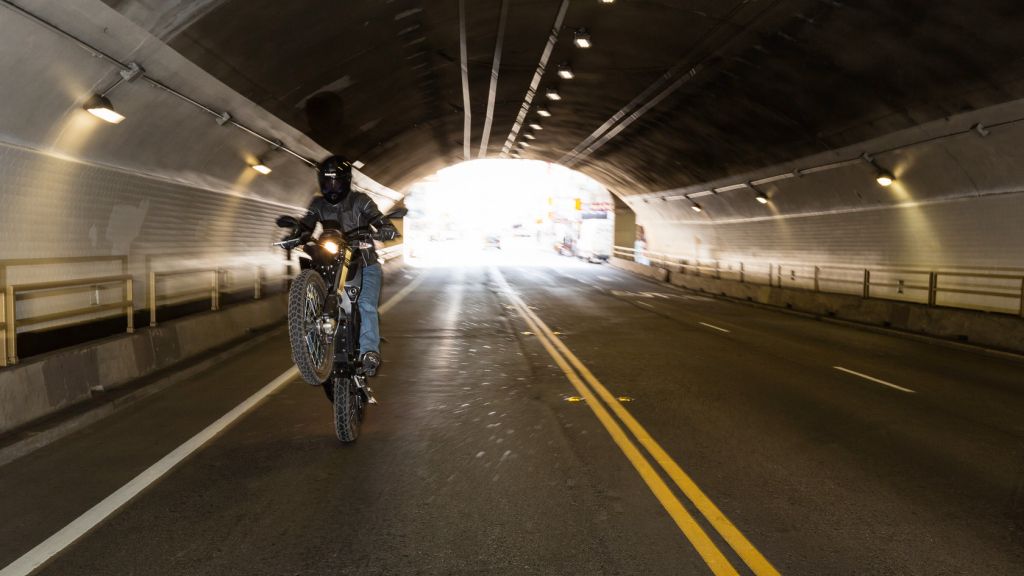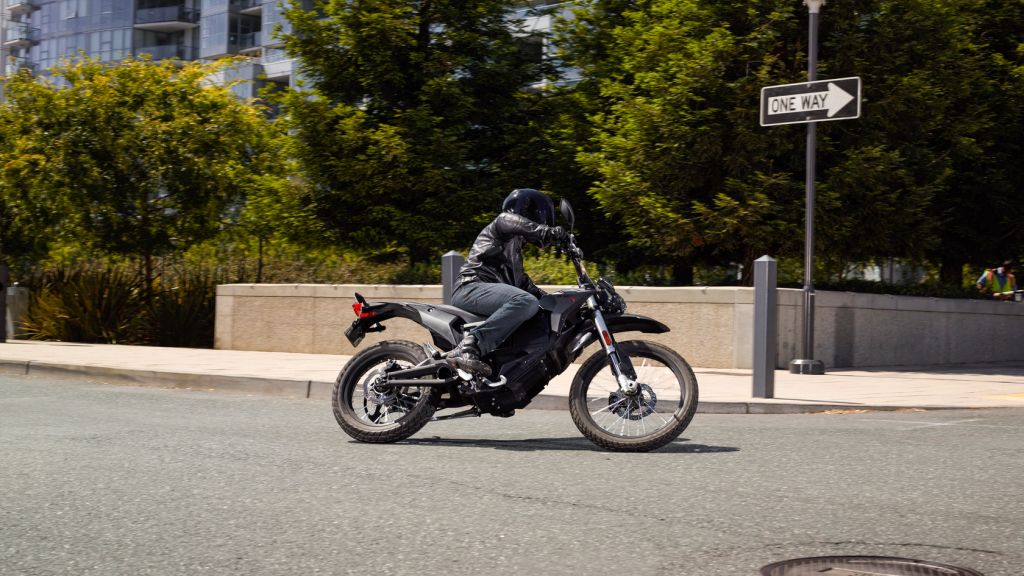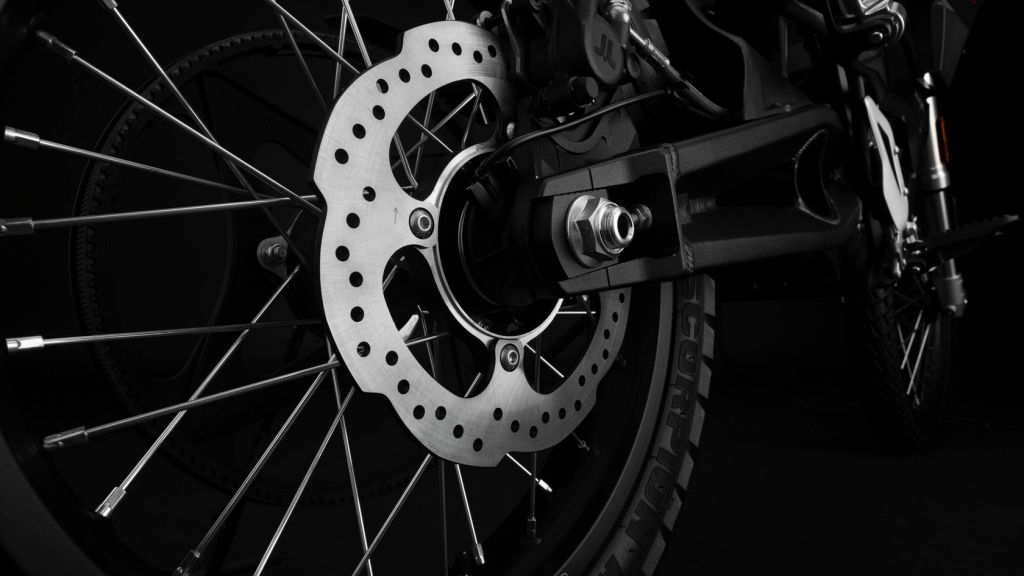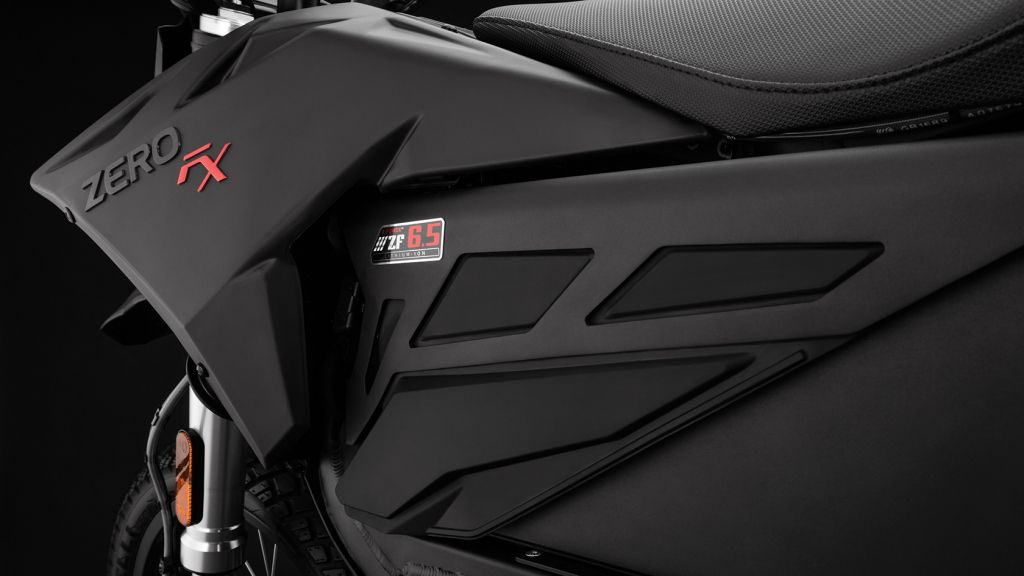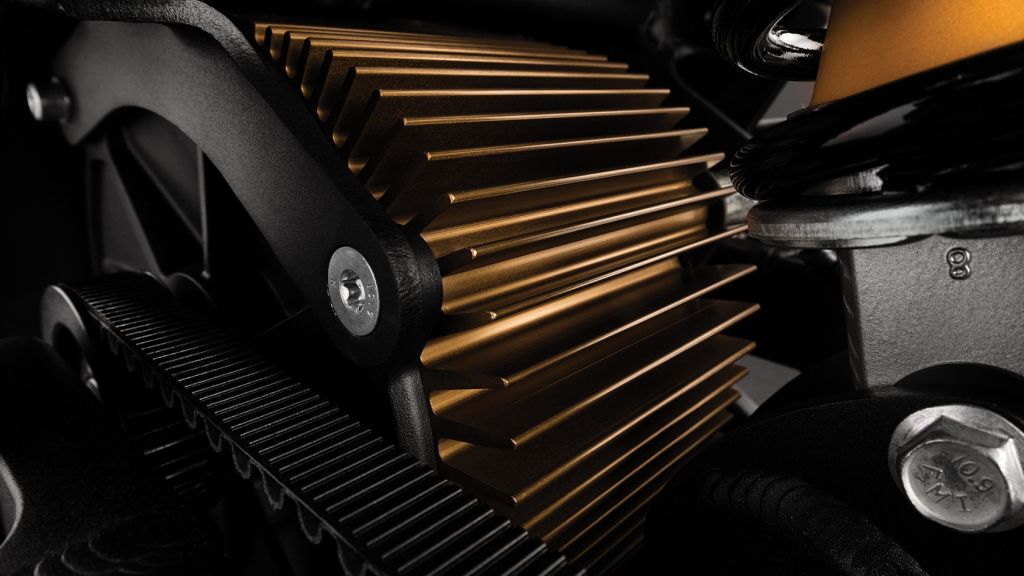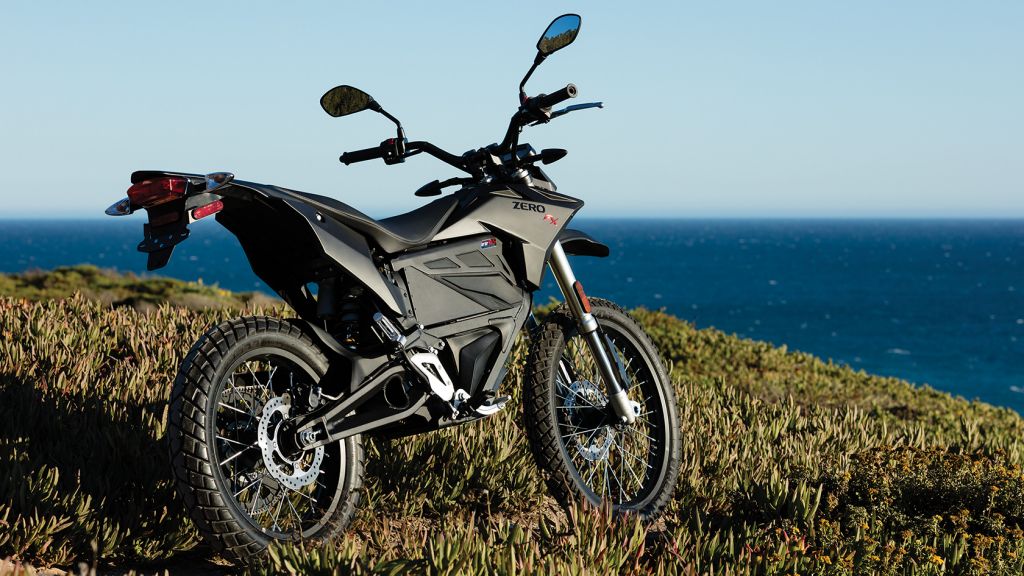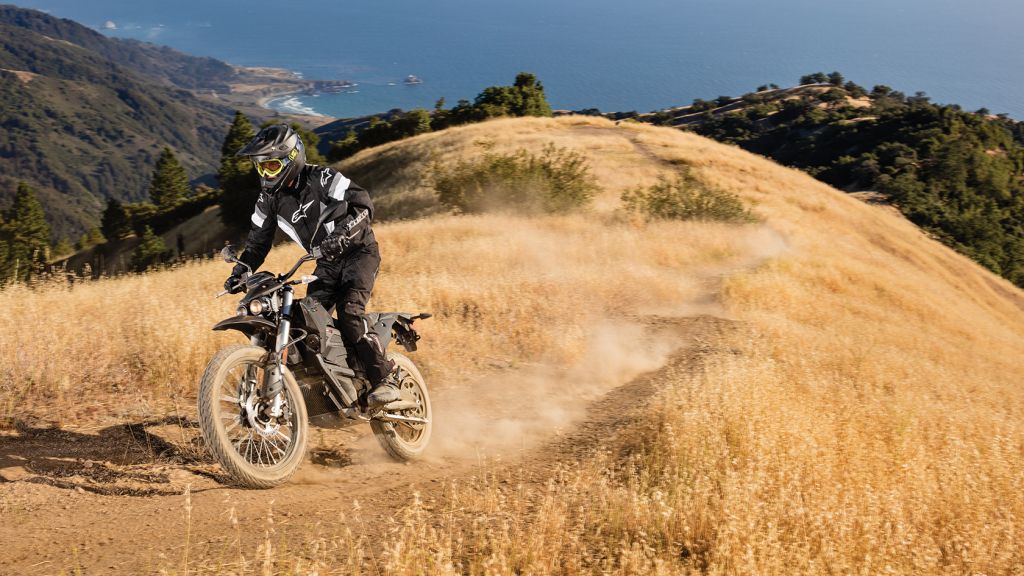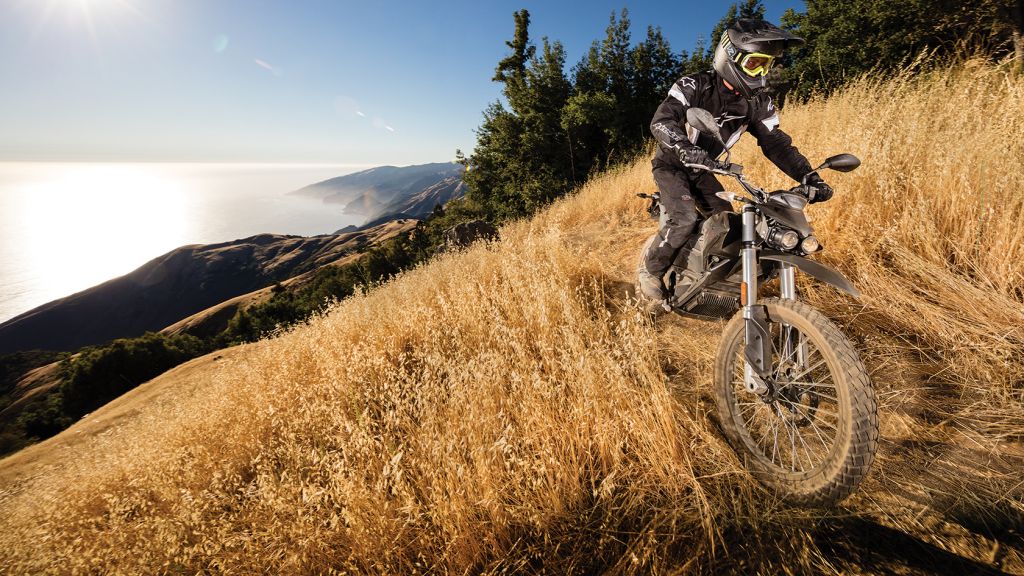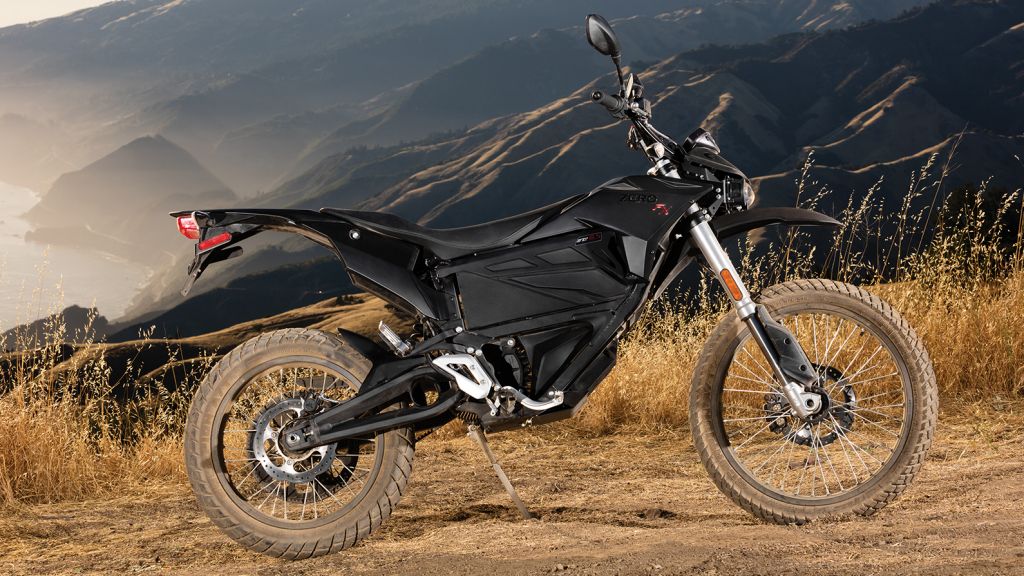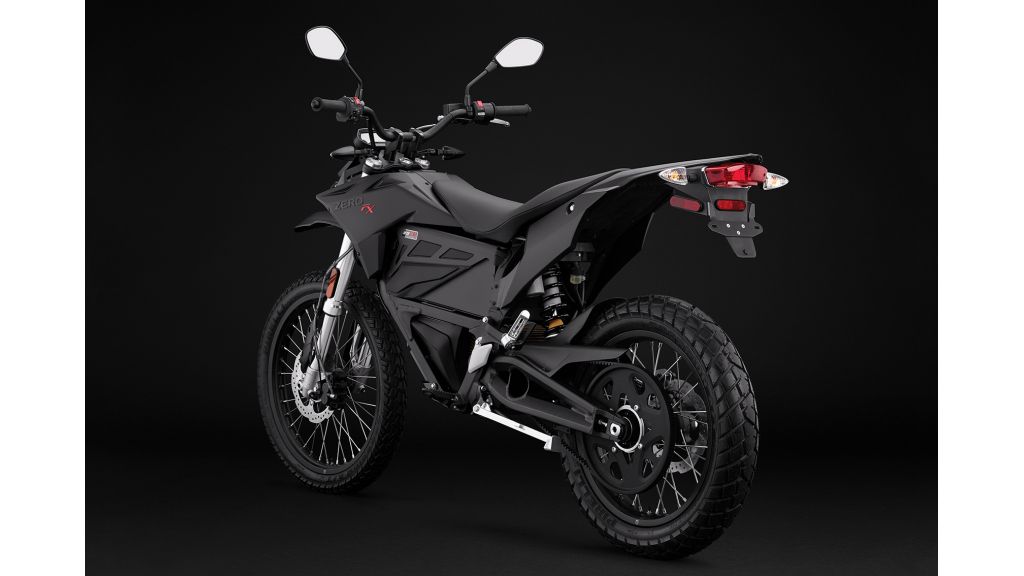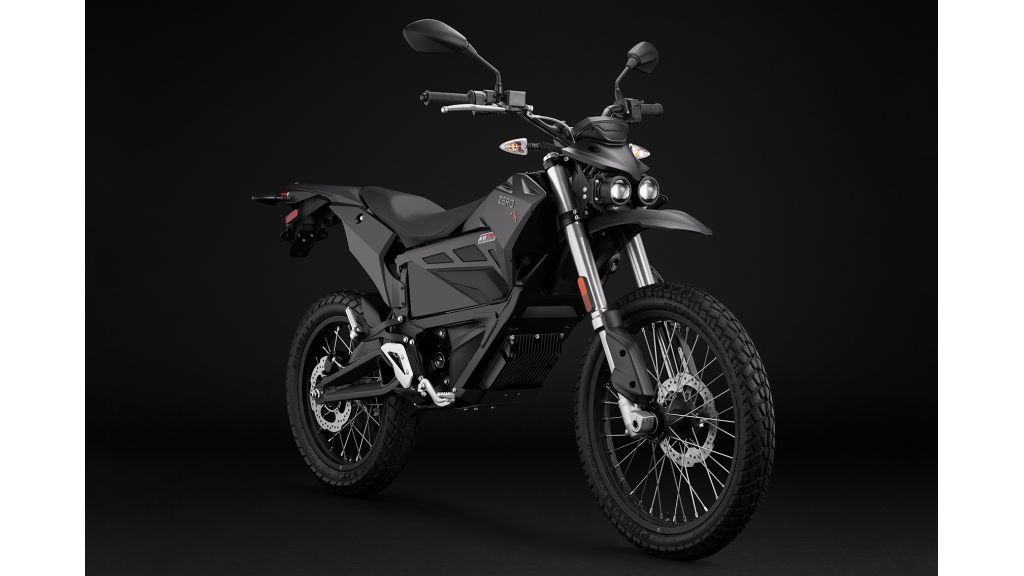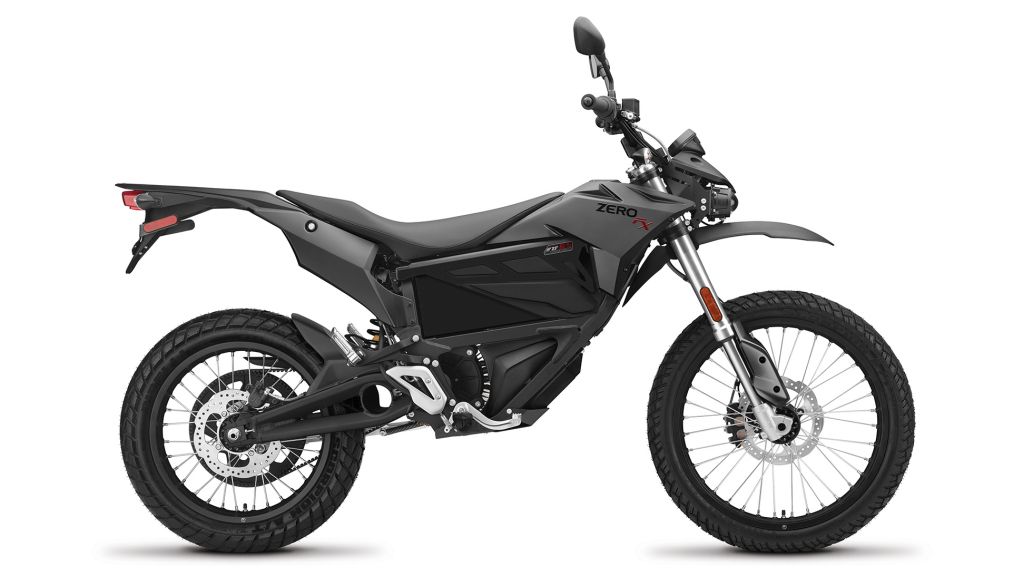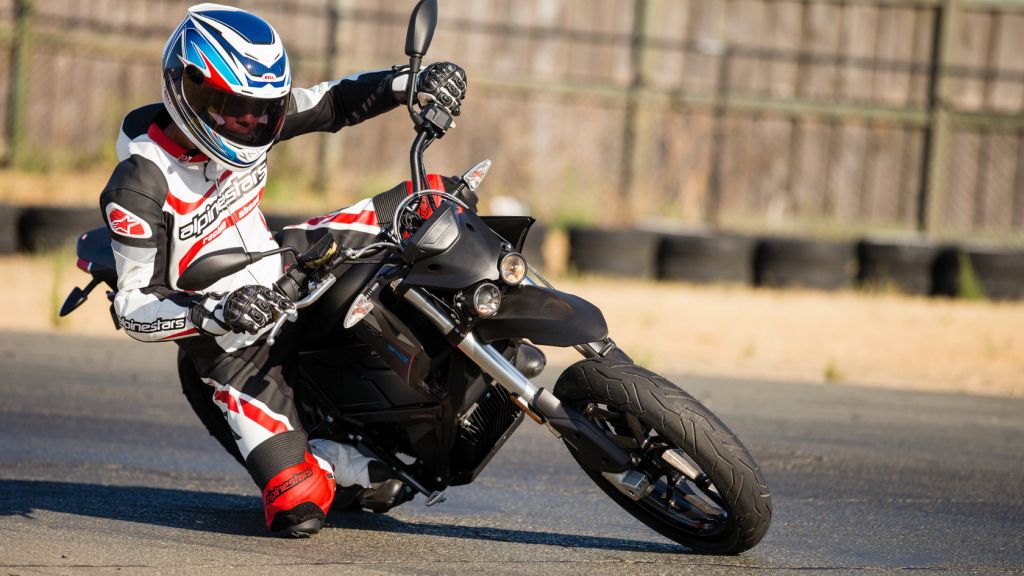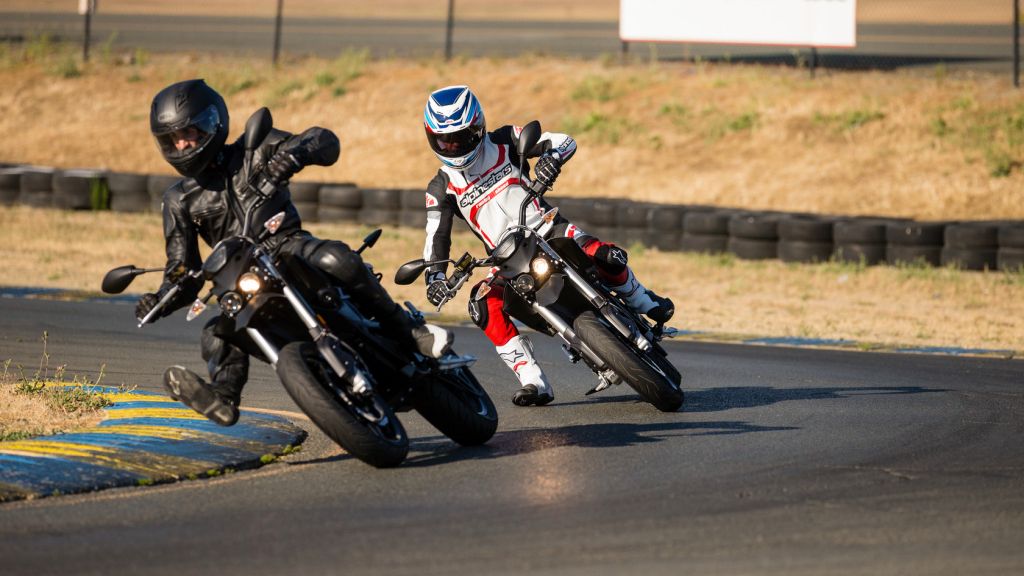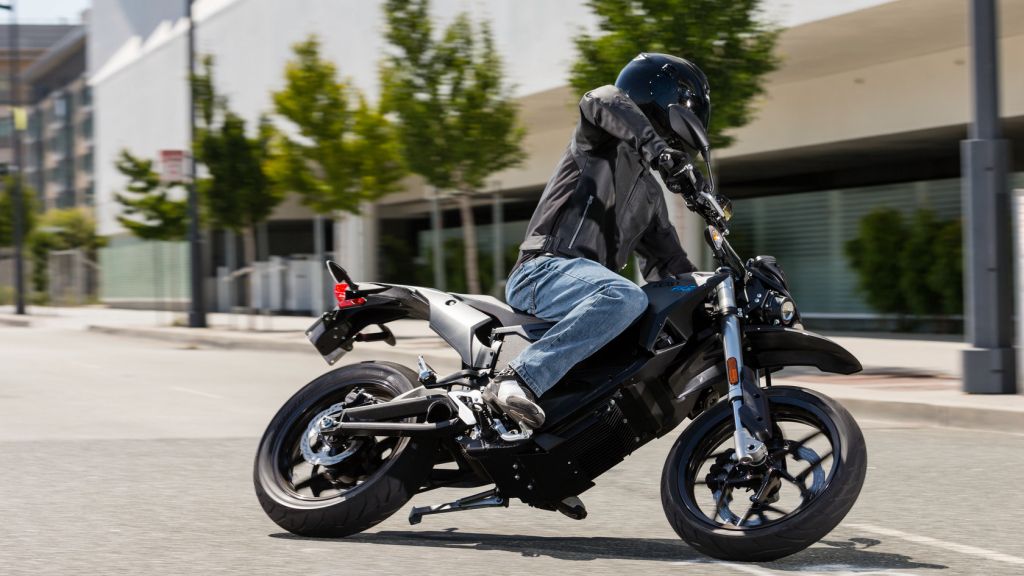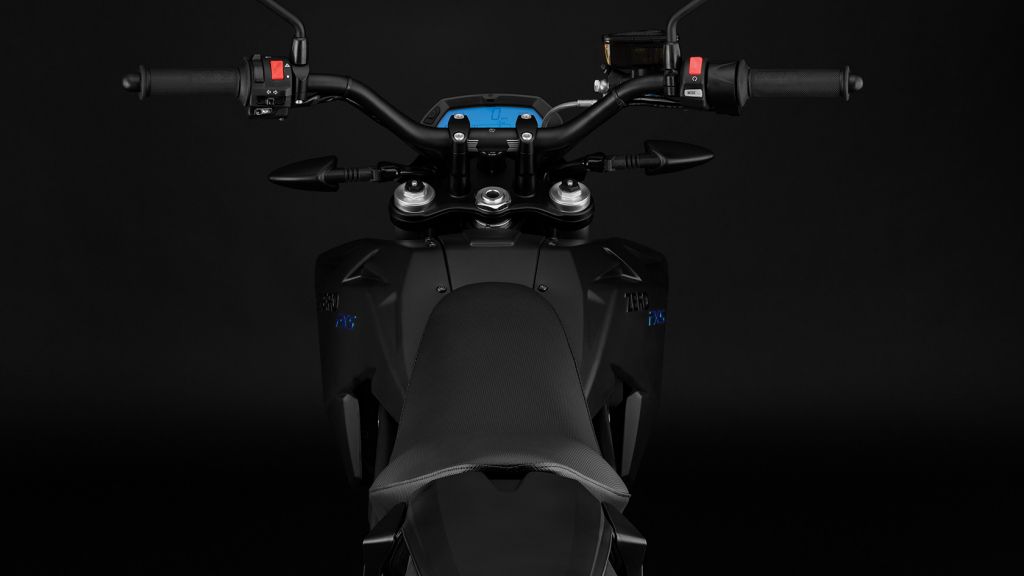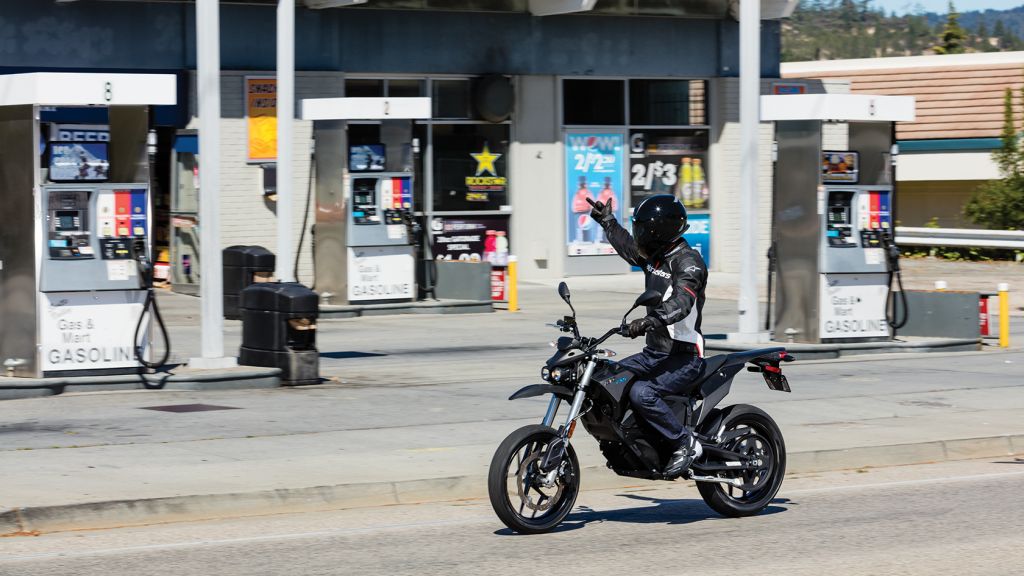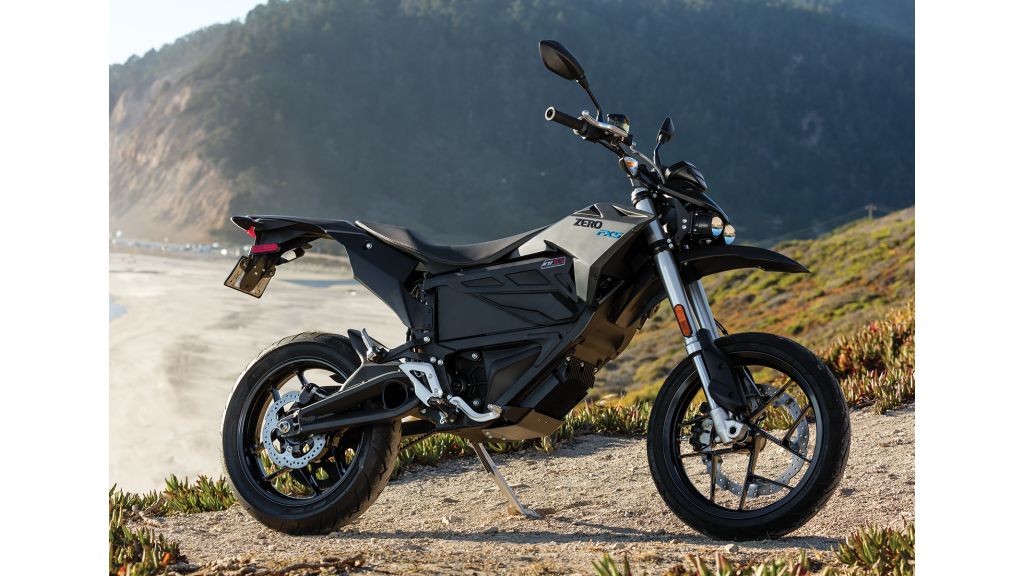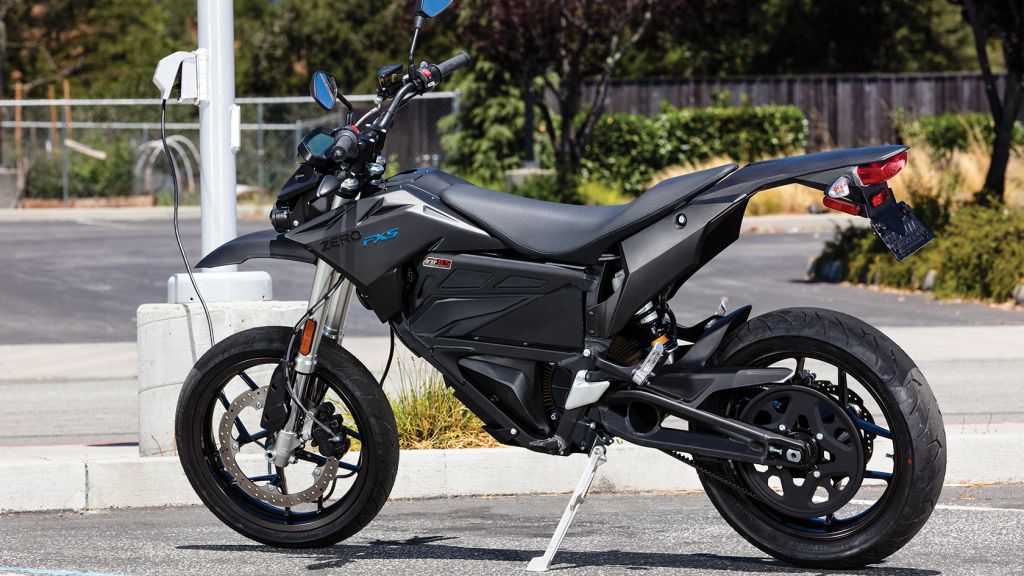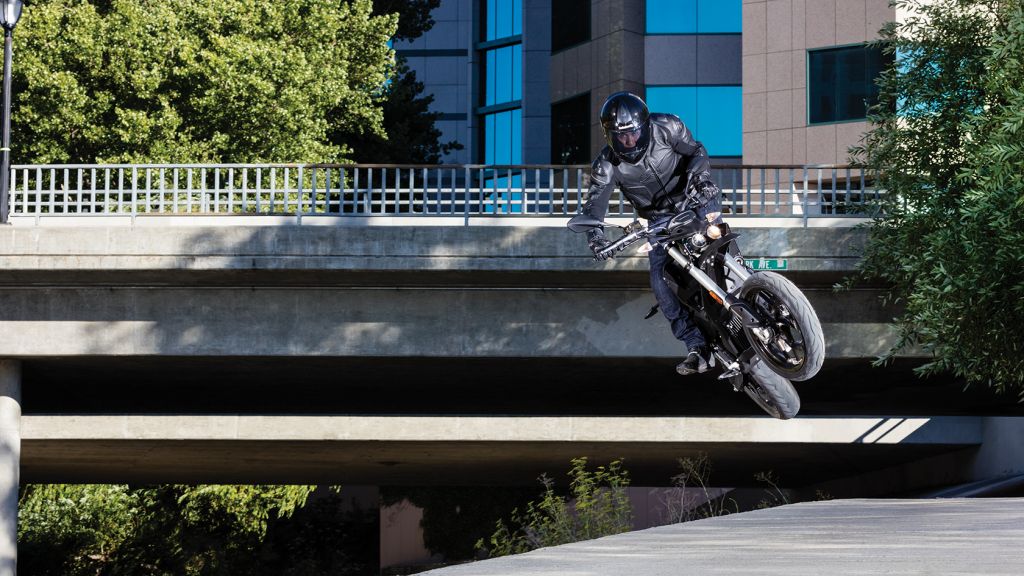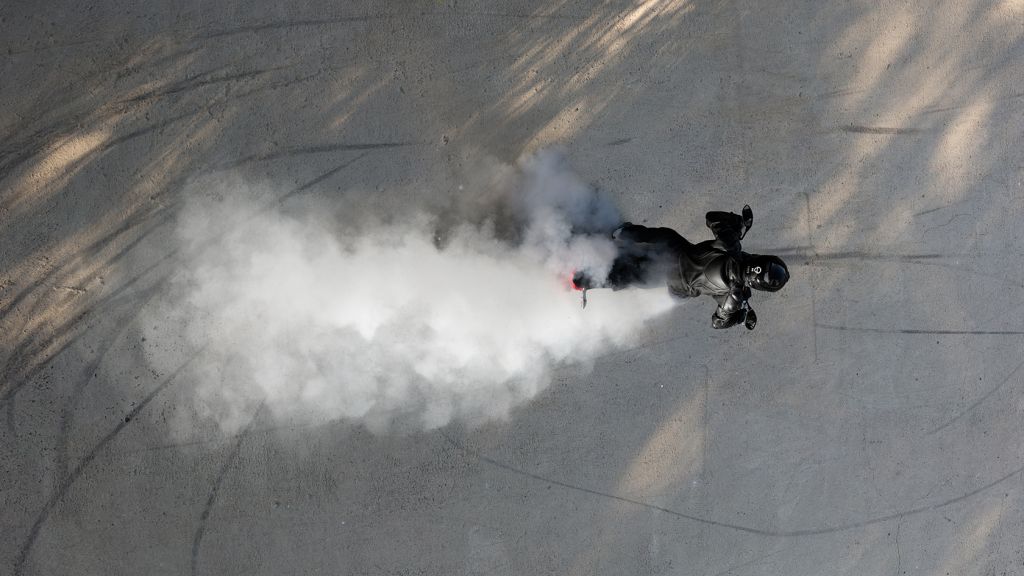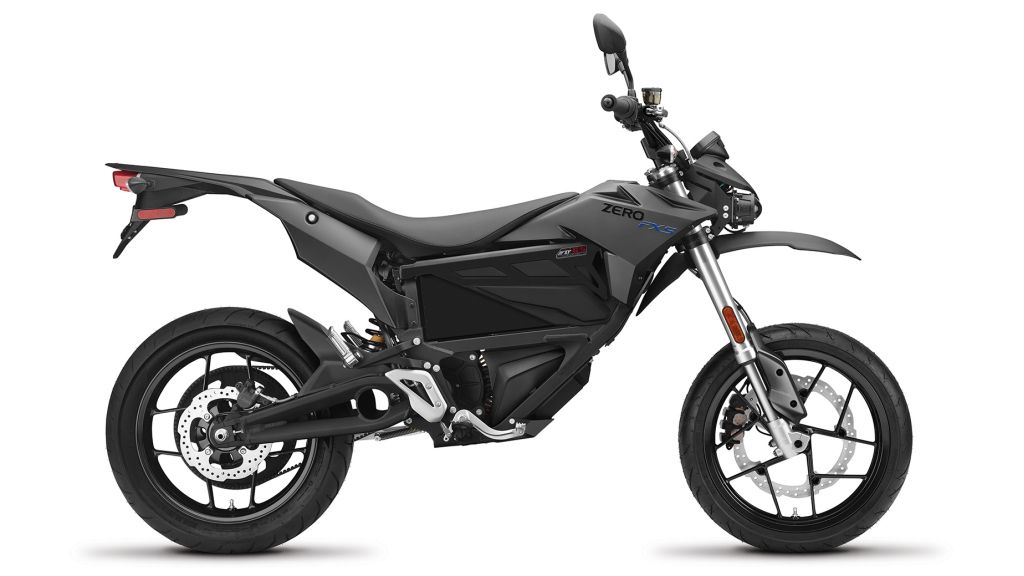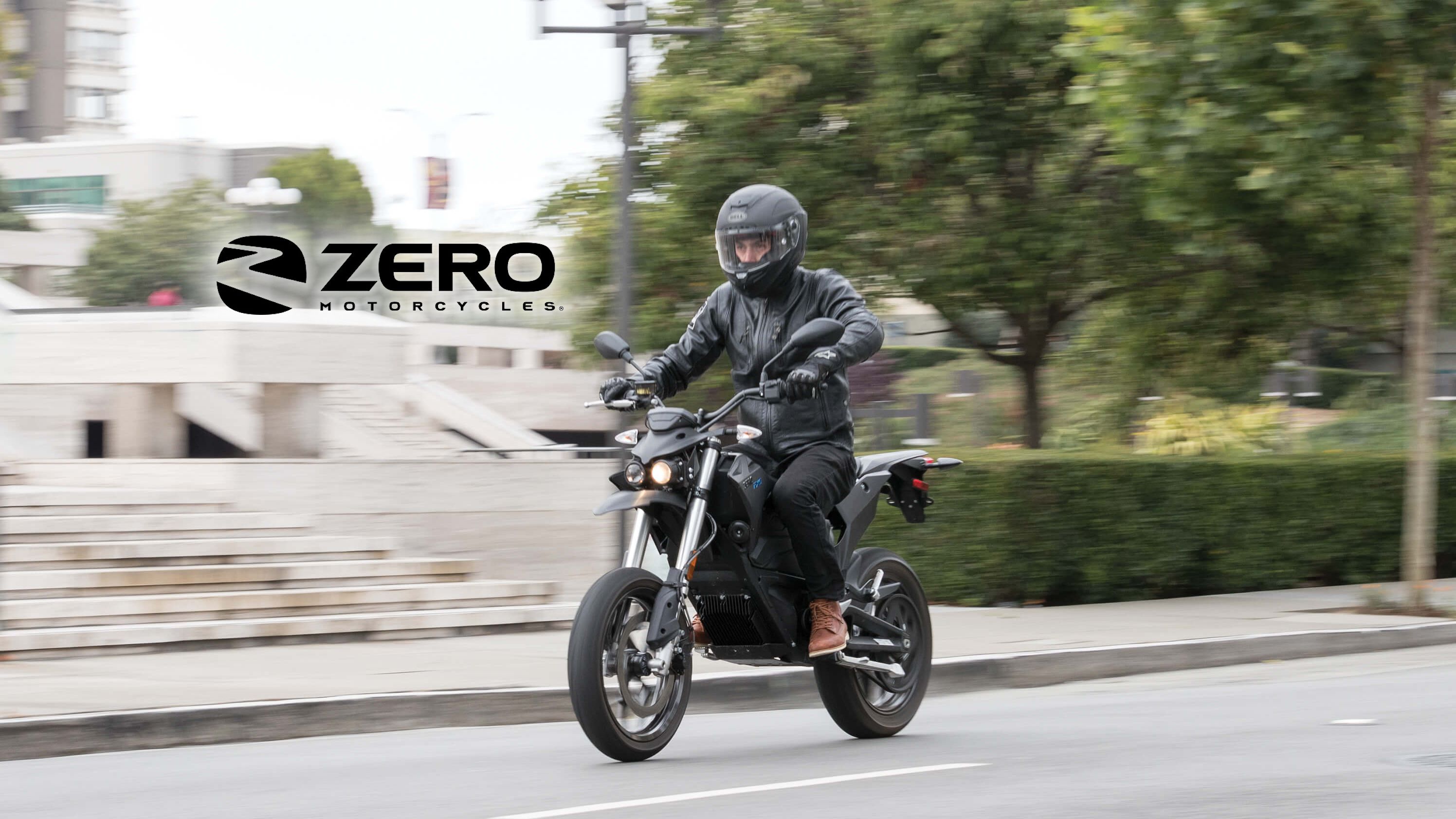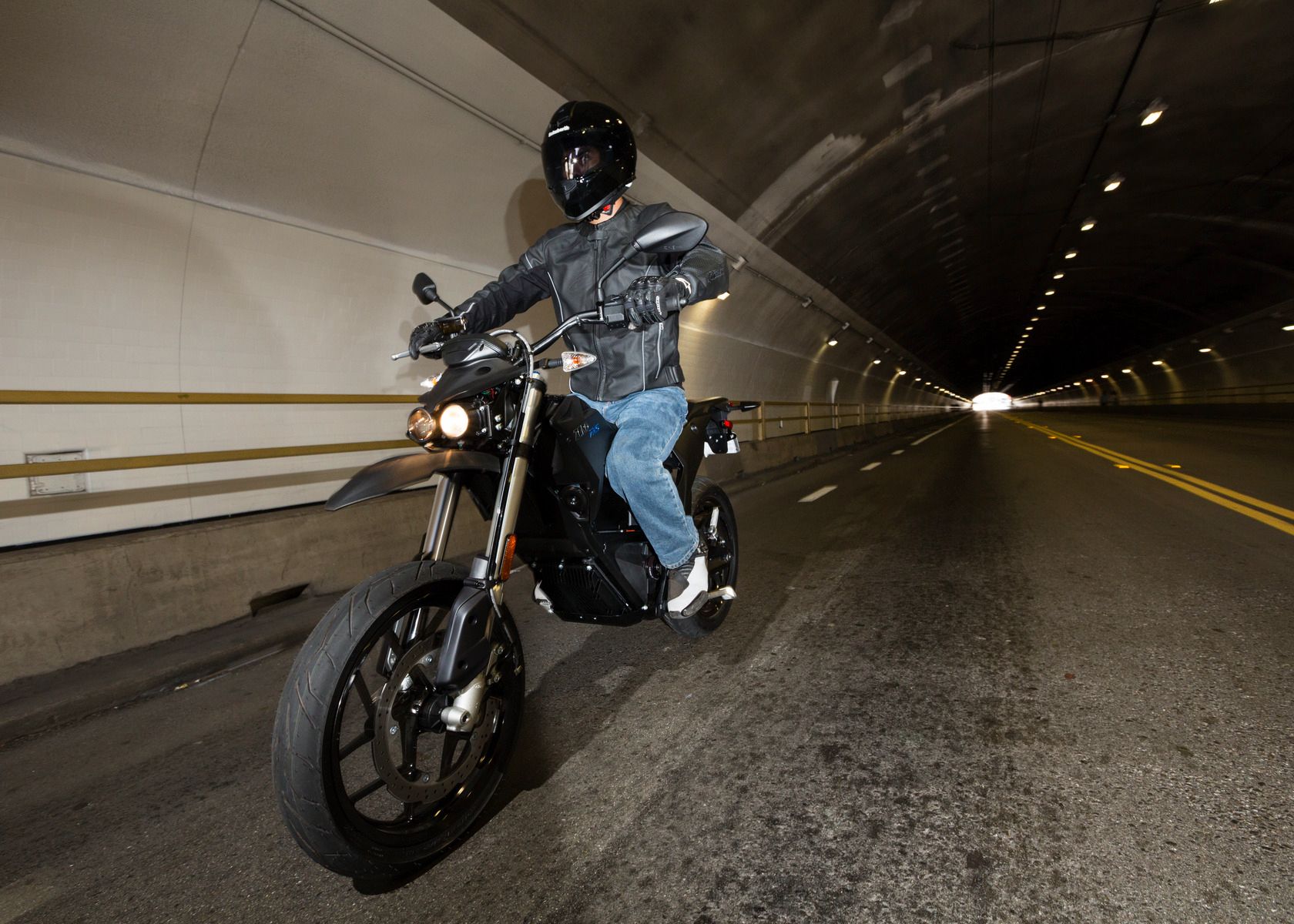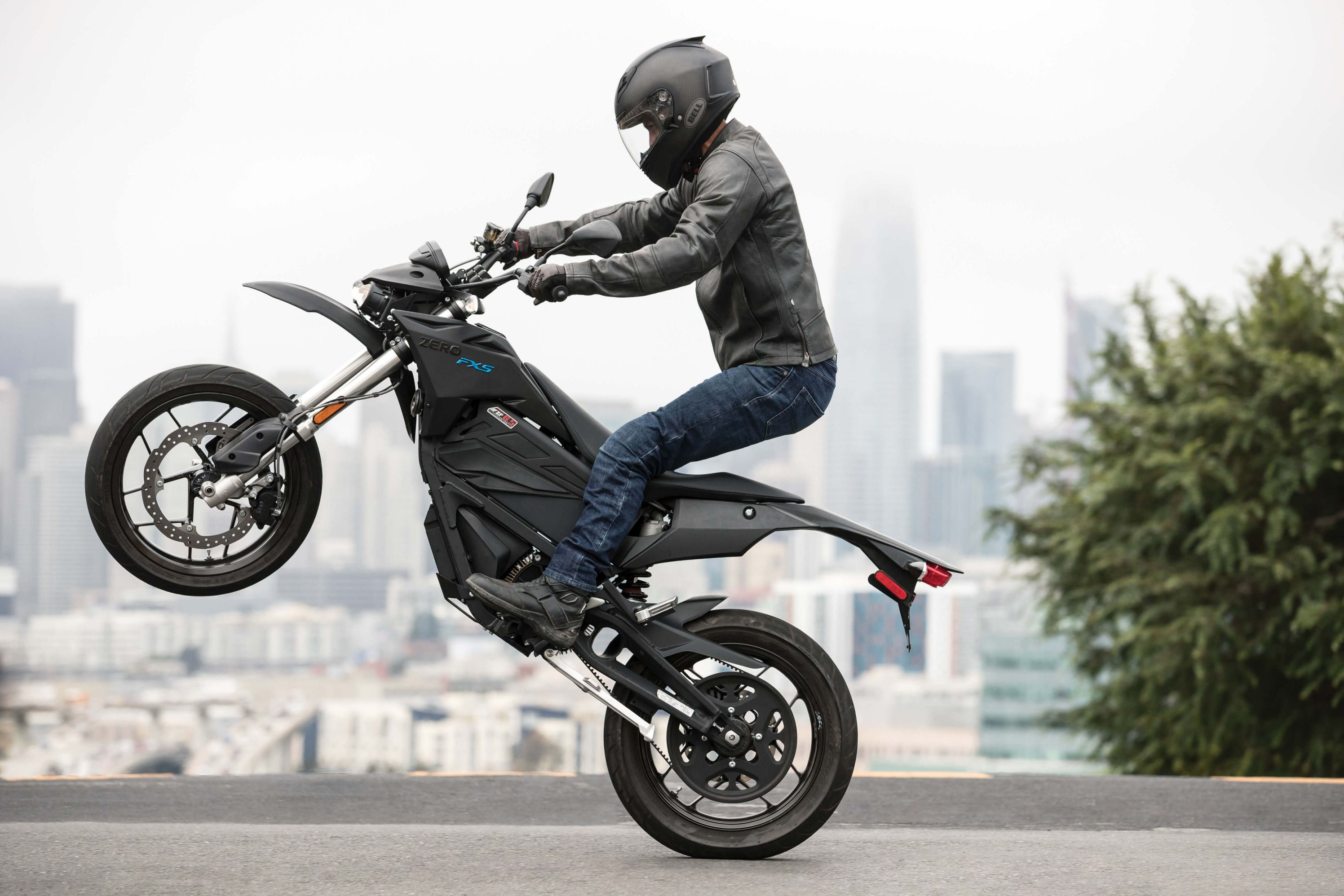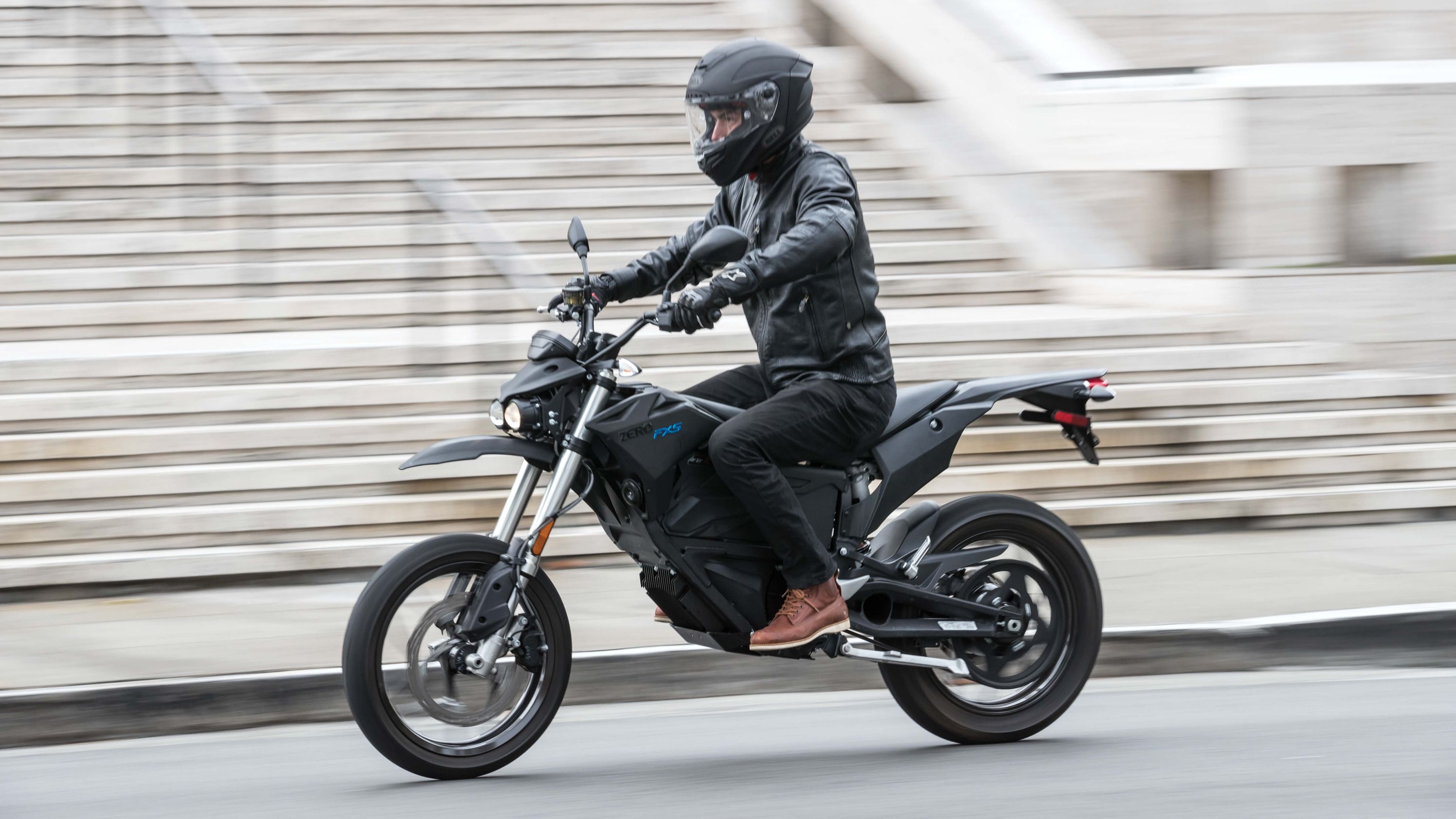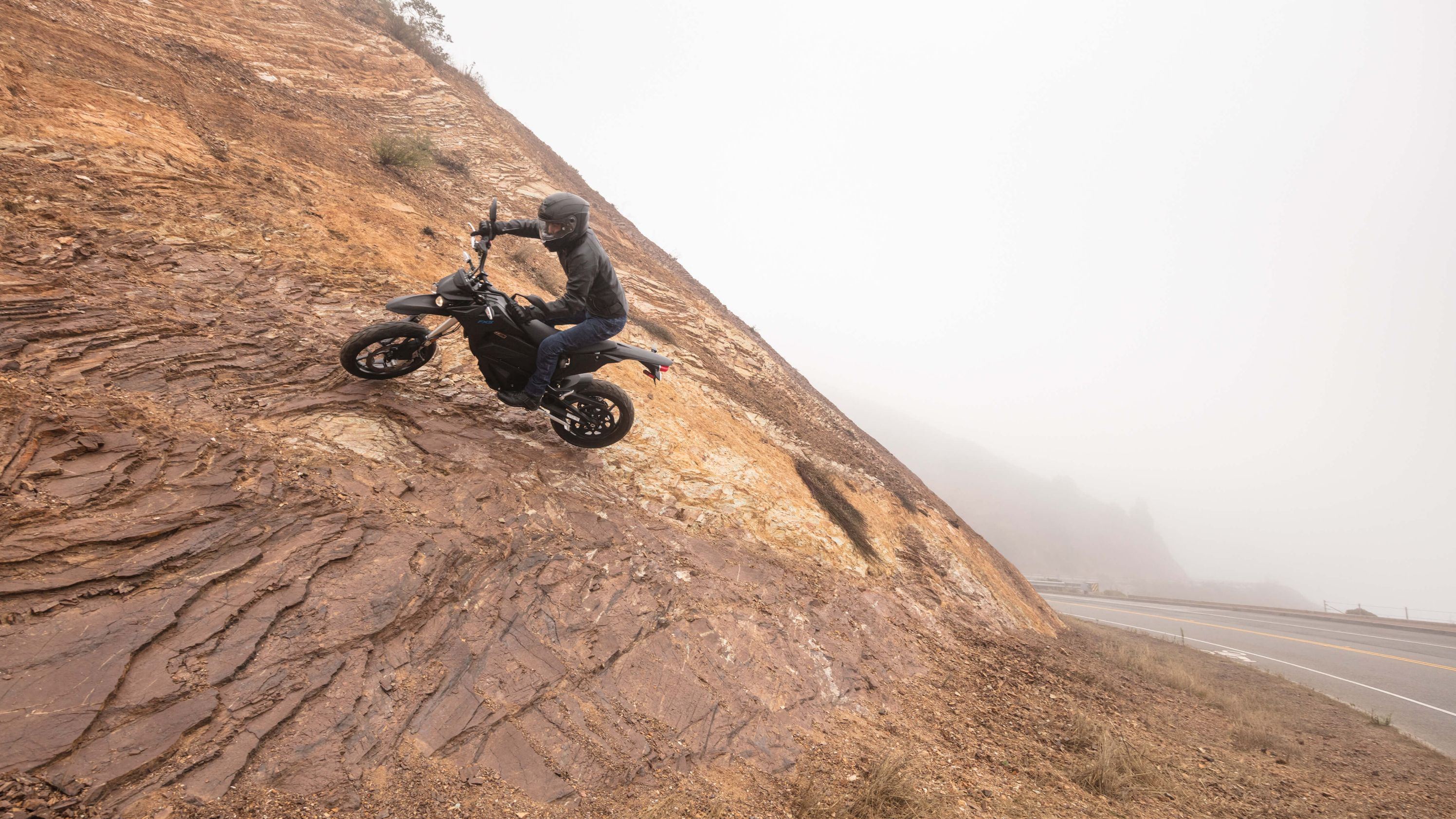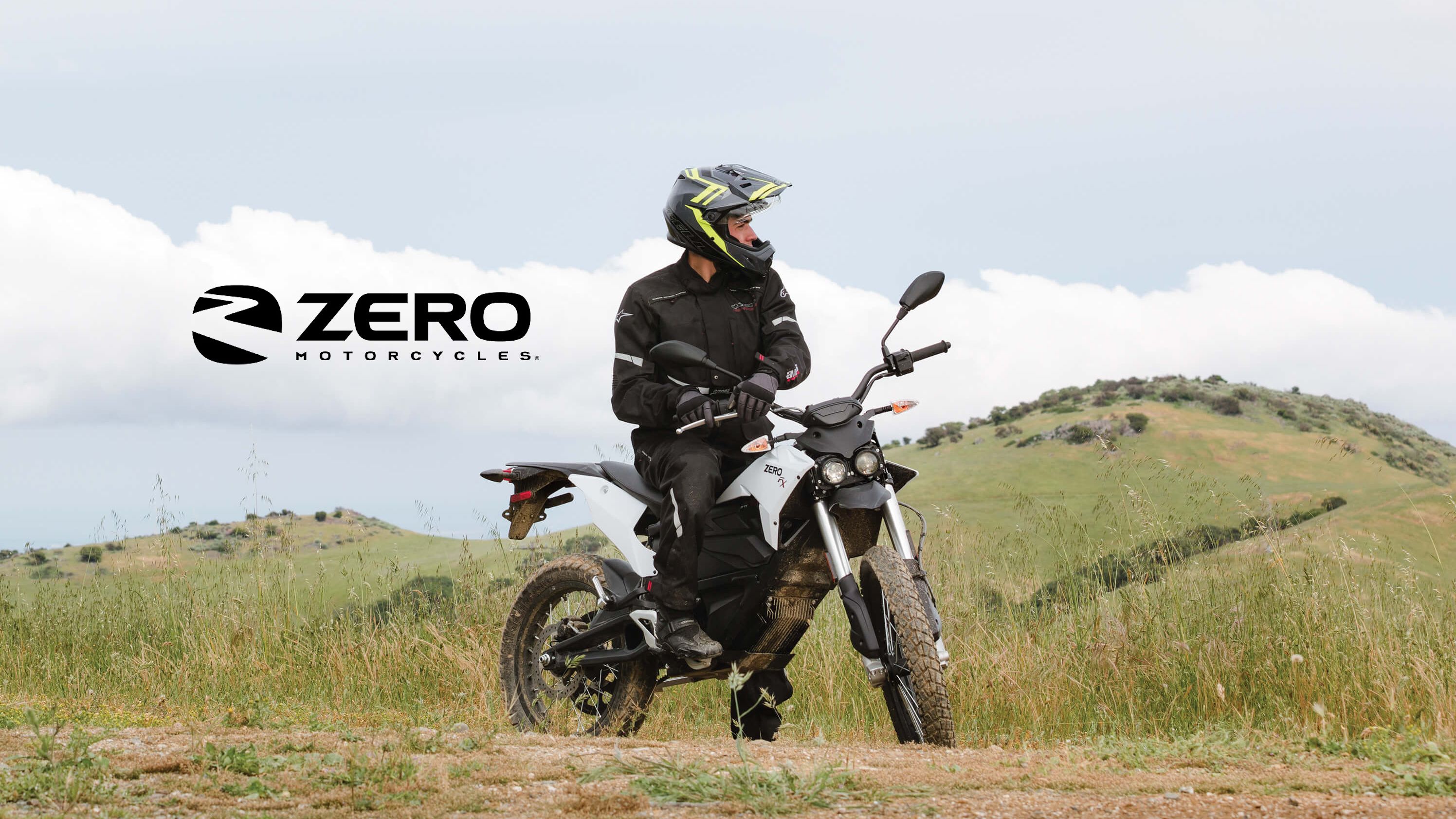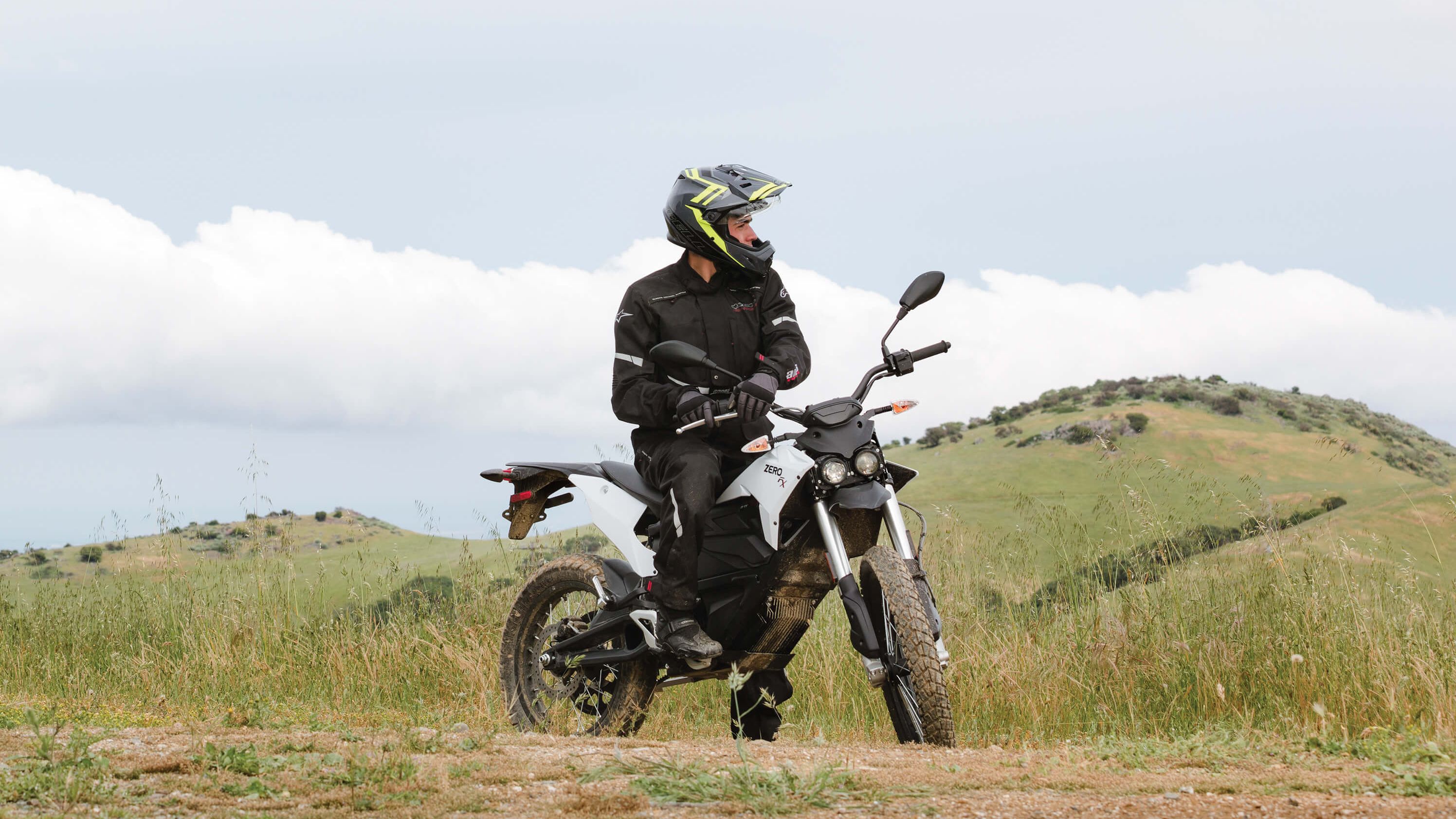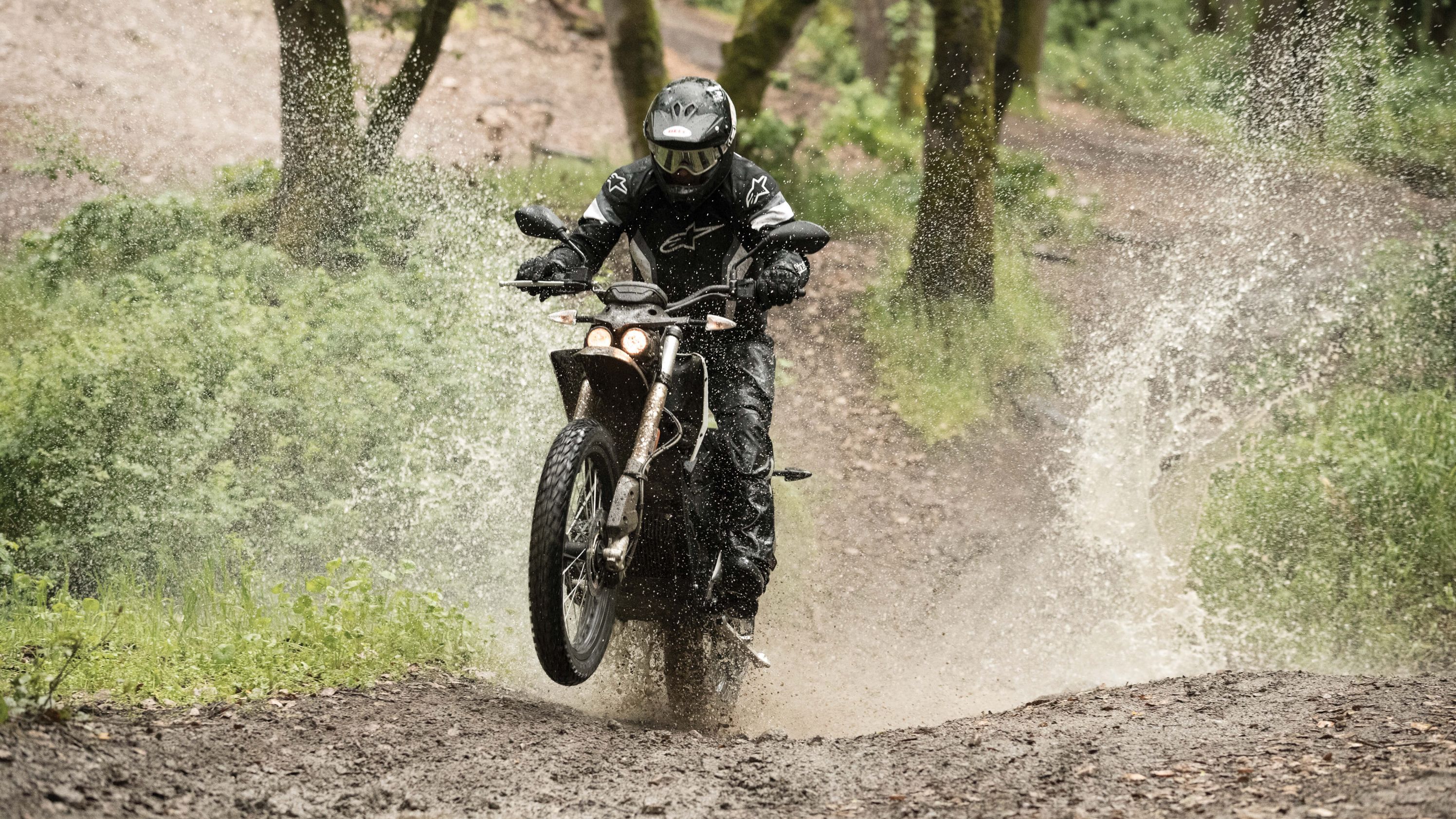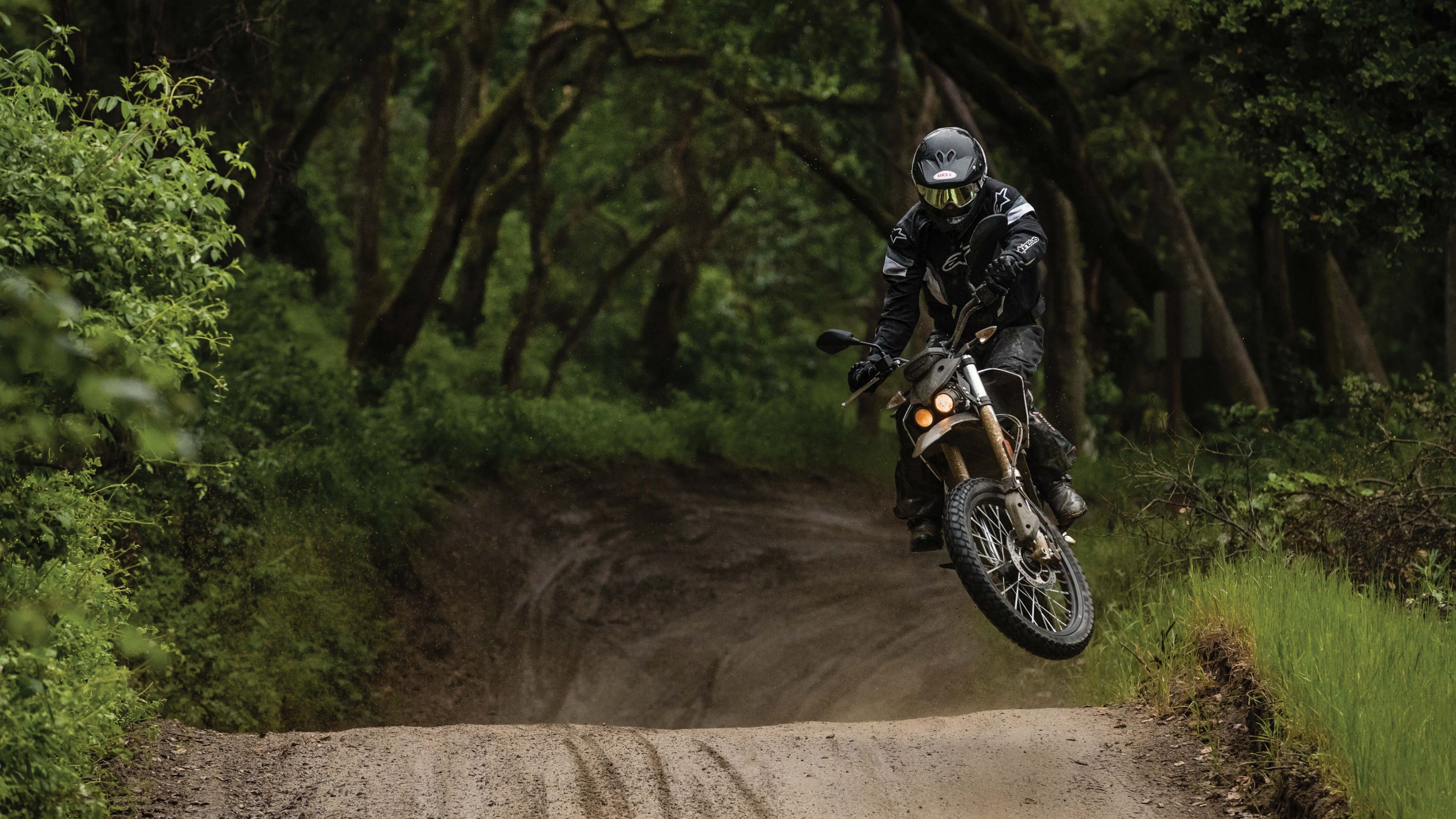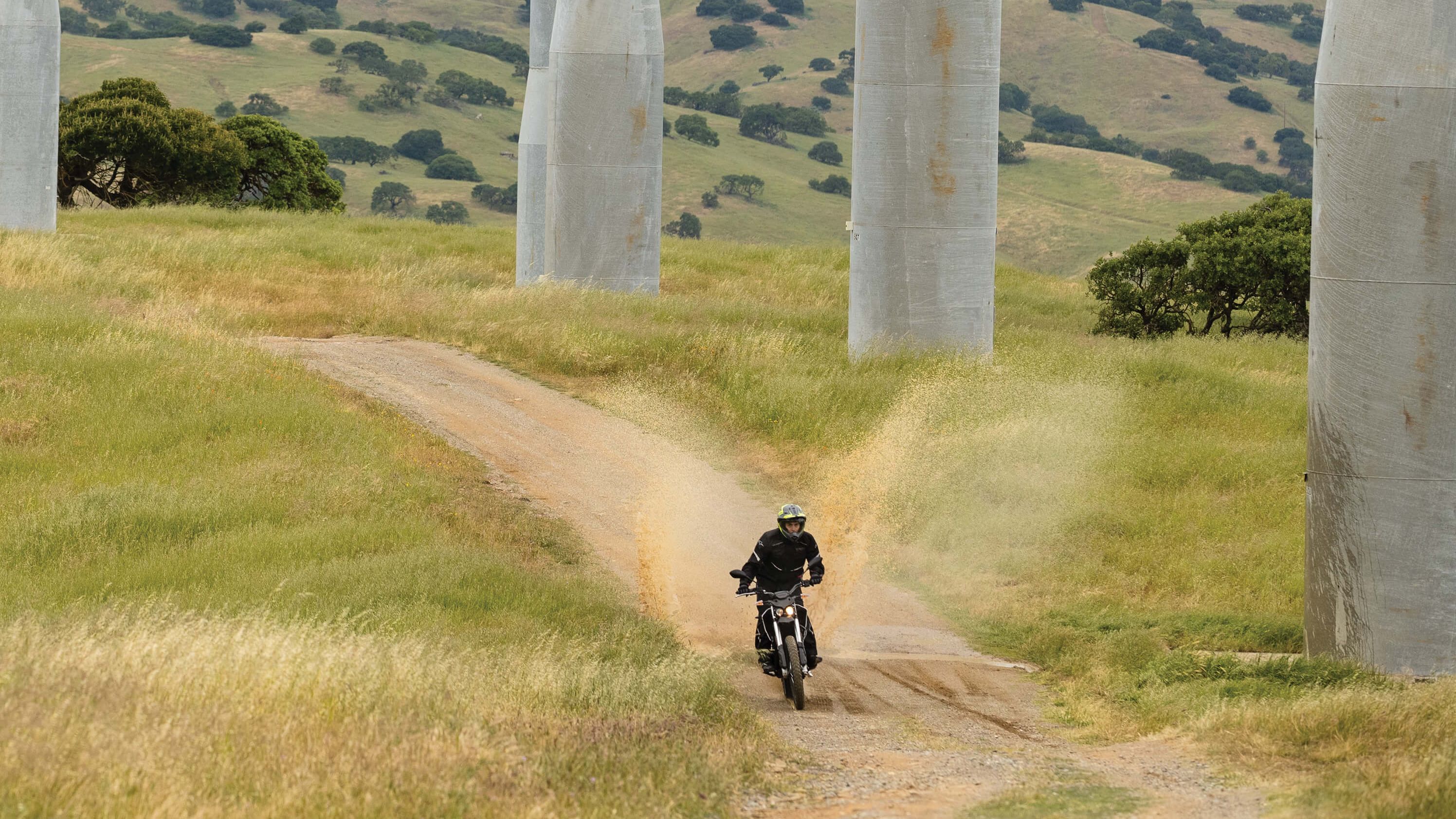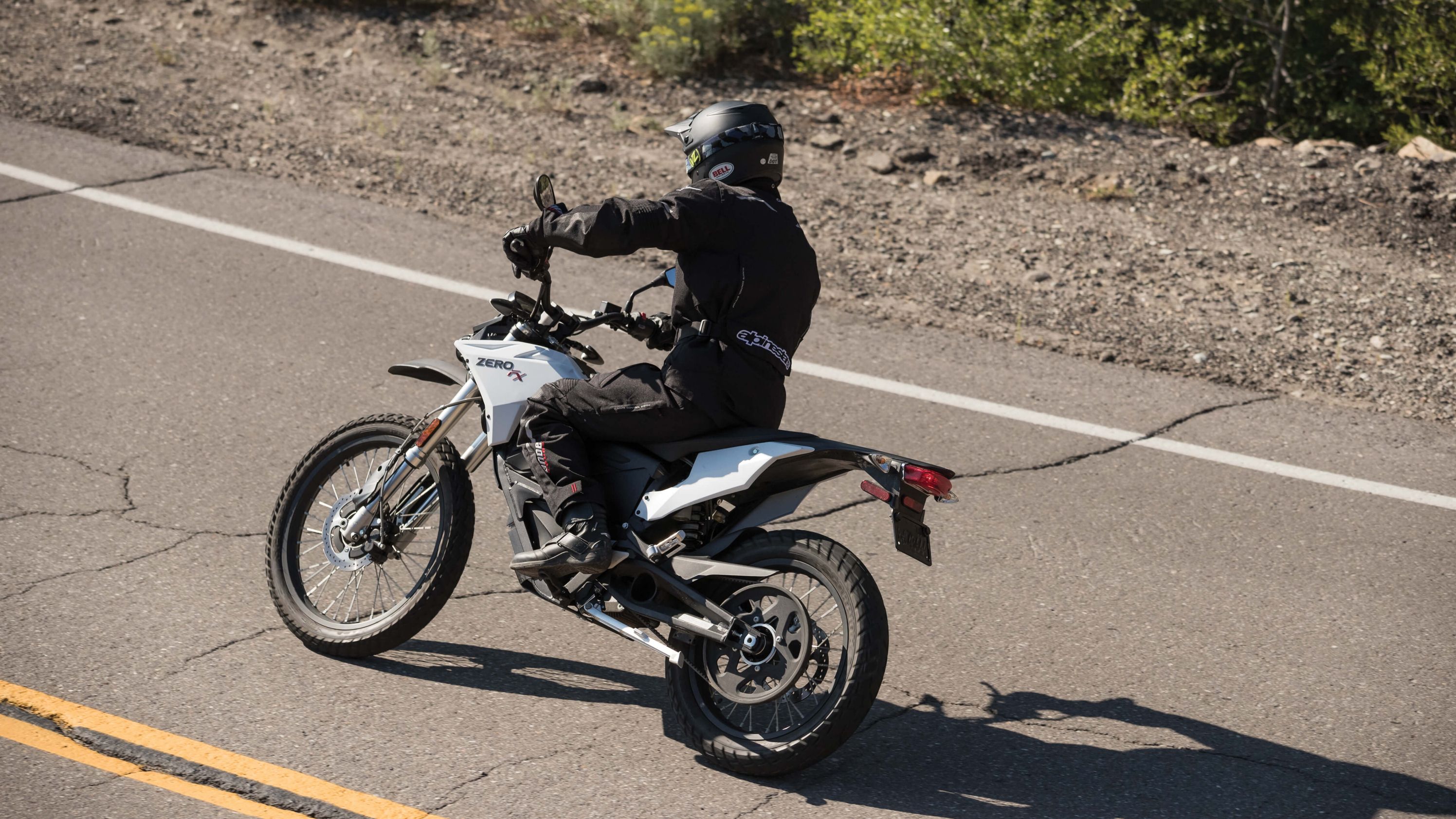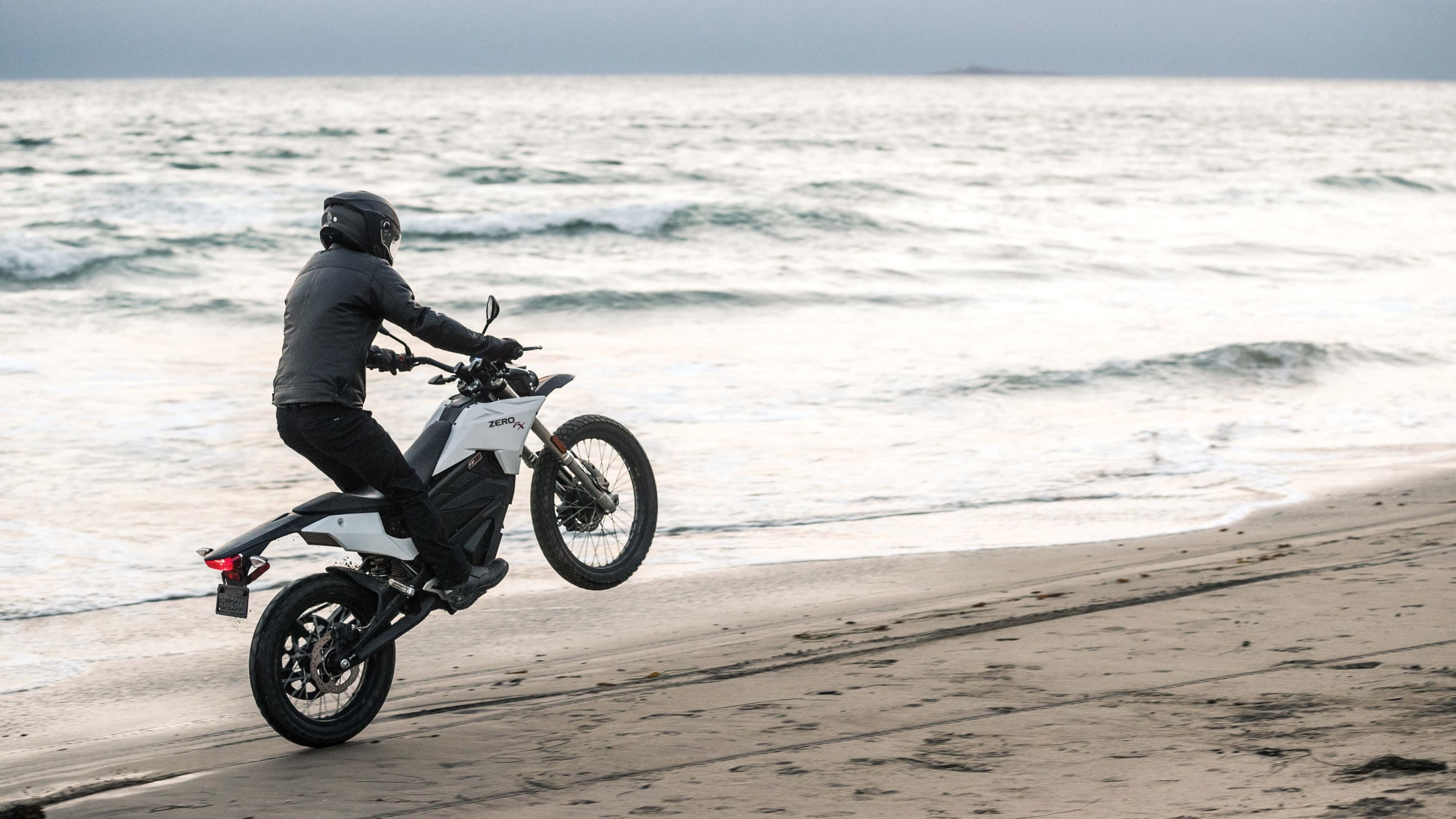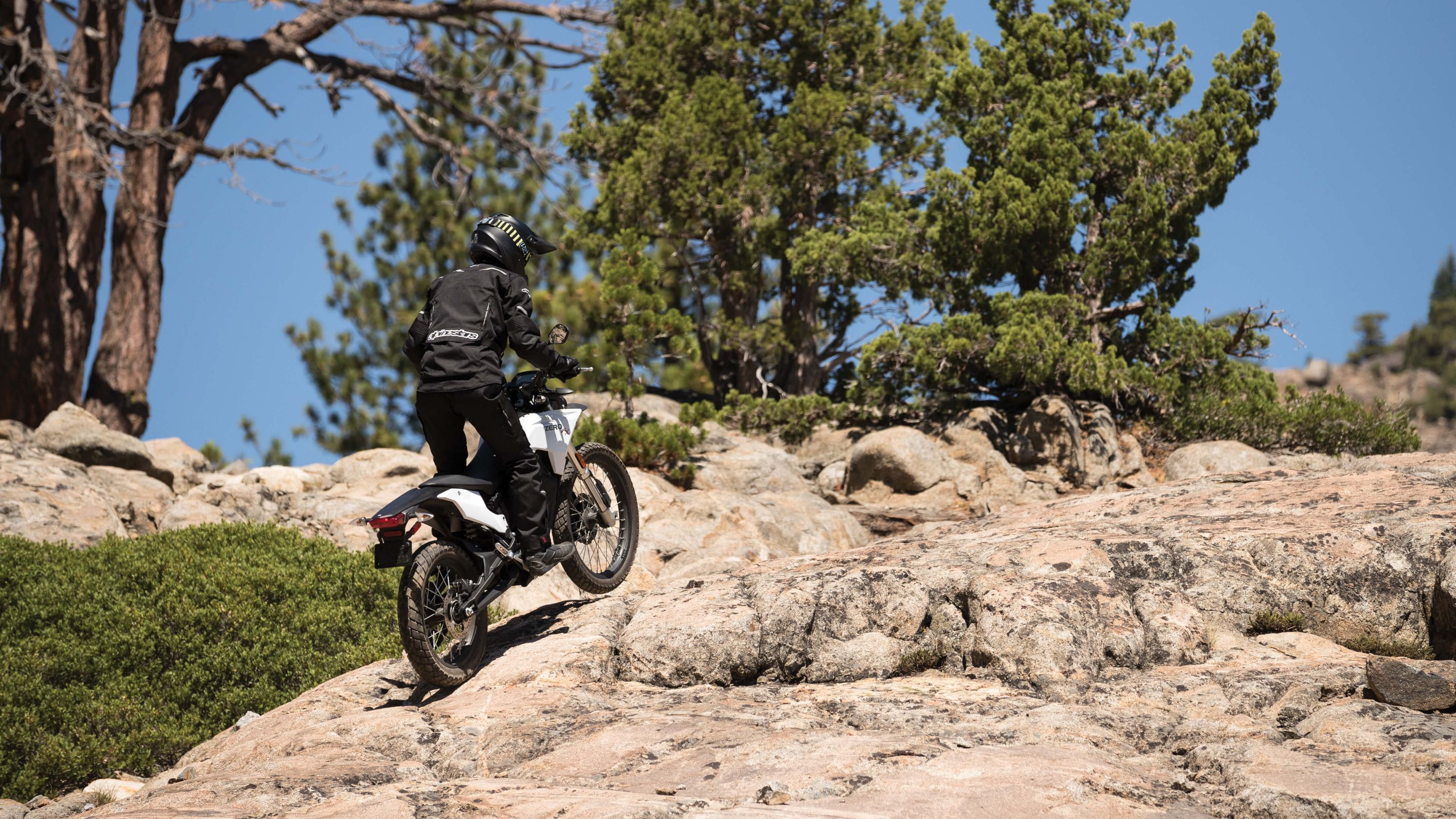The EV sector is booming, and as it's grown it has expanded into more and more genres. Zero Motorcycles is all about the electrics, and has pushed beyond the straight-up street and adventure categories into dual-sport and supermoto territory. The off-road capable FX enters the 2018 MY off an update last year alongside its urban-jungle sibling, the FXS, for a dynamic duo of EV fun with more torque and more horsepower than previous model years, plus other upgrades to the drivetrain to include a wider final-drive belt and improvements to the power packs.
Continue reading for my review of the Zero FX and FXS.
2017 - 2018 Zero Motorcycles FX / FXS
- Make: Array
- Model: 2017 - 2018 Zero Motorcycles FX / FXS
- Engine/Motor: Z-Force®
- [do not use] Vehicle Model: Array
Zero Motorcycles FX/FXS Design
Electric bikes are still a new technology, and as such is struggling to find mainstream acceptance. By moving into numerous categories on a proven drive and power-storage system, Zero is expanding its footprint while progressing the electrics market to the benefit of all. No other EV manufacturer has such a diverse lineup, and I always love checking out green tech.
At their core, these siblings carry a very dirtbike-ish vibe with a small faux fuel-tank area and nearly straight upper lines where the bench seat rides up onto the “tank.” A shallow-scoop saddle rises to the level subframe with a minimal p-pad at the tapered rear end. Below that, the body of the chassis furthers the dirtbike look with an overall shape similar to that of the smoker bikes, but not so much that you can't tell there's something different about it.
Both rides sport dual-lens, “robot-eyes” headlights over a tripletree-mount front mudguard, though I would expect a standard, fork slider-mounted fender to be more appropriate for the Supermoto, but maybe that's just me. These rides are identical all the way down to the hoops that set the tone for the whole machine, but at that point all bets are off. Because of the dissimilar wheel sizes, seat height varies a bit between the 32.9-inch Supermoto and the taller, 34.7-inch FX, which makes sense given the difference in suspension travel between the two. Regardless of the tires, both come built to keep center-of-gravity as low as possible for nimble handling and confidence at low speeds.
Zero Motorcycles FX/FXS Chassis
Aircraft-grade, aluminum-squarestock members make up the welded frame assembly with gussets in high-stress areas and an unusual shape in the backbone. In fact, the entire frame is rather unusual, but the needs of the battery-powered drivetrain are miles away from that of a smoker bike, and thus the construction necessarily is too. Both bikes run usd front forks, but slight differences in the forks and tire size change the pitch of the bike enough to change the effective rake angle.
The Supermoto runs on symmetrical, 17-inch, cast-aluminum rims with 24.4 degrees of rake and a short, 2.8 inches of trail, but the 21-inch, laced front wheel and 18-inch rear jacks the front end of the FX up enough to add a whole degree to the rake for a total of 25.4 degrees with 4.1 inches of trail and a more stable disposition. Pirelli Scorpion MT 90 All-terrain tires give the FX its dual-sport capacity with a deeply carved tread that retains generous street flats for confidence once the brown turns to black. The street-centric nature of the FXS demands something different, and gets it in the Pirelli Diablo Rosso II rubbers.
These rides feature Showa suspension components at both ends with a set of 41 mm, cartridge-type, inverted front forks and a 40 mm, piggyback shock to manage the yoke-style swingarm. Both ends come fully adjustable with variable spring preload as well as compression and rebound damping; a refreshing change for a market awash with humdrum shocks/forks. The FXS comes with quite a bit of suspension travel for a streetbike at 7-inches up front and 8.94-inches in back, but the off-road bent of the FX gives it a bit more up front for a total of 8.6 inches of travel.
Brakes vary as well. Both bikes run a 240 mm disc with a single-piston, J-Juan caliper in back and a single disc with a twin-pot caliper up front, the FX runs another 240 mm disc up front where the FXS bumps that up to 320 mm. A Bosch Gen 9 ABS provides a safety net that helps you use those brakes to the max.
|
Model: |
FX |
FXS |
|
Front suspension: |
Showa 41 mm inverted cartridge forks, with adjustable spring preload, compression and rebound damping |
Showa 41 mm inverted cartridge forks, with adjustable spring preload, compression and rebound damping |
|
Rear suspension: |
Showa 40 mm piston, piggy-back reservoir shock with adjustable spring preload, compression and rebound damping |
Showa 40 mm piston, piggy-back reservoir shock with adjustable spring preload, compression and rebound damping |
|
Front suspension travel: |
8.6 in (218 mm) |
7.00 in (178 mm) |
|
Rear suspension travel: |
8.94 in (227 mm) |
8.94 in (227 mm) |
|
Front brakes: |
Bosch Gen 9 ABS, J-Juan dual piston floating caliper, 240 x 4.5 mm disc |
Bosch Gen 9 ABS, J-Juan asymmetric dual piston floating caliper, 320 x 5 mm disc |
|
Rear brakes: |
Bosch Gen 9 ABS, J-Juan single piston floating caliper, 240 x 4.5 mm disc |
Bosch Gen 9 ABS, J-Juan single piston floating caliper, 240 x 4.5 mm disc |
|
Front tire: |
Pirelli Scorpion MT 90 A/T 90/90-21 |
Pirelli Diablo Rosso II 110/70-17 |
|
Rear tire: |
Pirelli Scorpion MT 90 A/T 120/80-18 |
Pirelli Diablo Rosso II 140/70-17 |
|
Front wheel: |
1.85 x 21 |
3.00 x 17 |
|
Rear wheel: |
2.50 x 18 |
3.50 x 17 |
Zero Motorcycles FX/FXS Drivetrain
As usual, the propulsion system presents a number of options that affect performance and charge times, but these two come with a feature unique amongst the lineup; a modular system that allows for quick, “hot swapping” battery changes. The modular batteries can be charged on or off the bike, and the amount of storage depends upon how many modules you use. Each module carries 3.3 kW, and the bike can carry up to two modules for a total of 6.5 kW, and if you aren't interested in being able to rotate batteries in and out, you can opt for the newly upgraded for 2017, non-modular 6.5 kW power pack that charges via the onboard, 650-Watt charger.
Life expectancy for the ZF3.3 power packs is around 100,000 miles, and you can expect to get about twice that from the ZF6.5. Regenerative braking serves as the electric equivalent of compression braking, and extends the range a bit by putting juice back into the pack when you roll off the throttle.
Regardless of which of these models and battery options you choose, Zero's Z-Force 75-5 brushless electric motor delivers a whopping 78 pound-feet of torque -- up 11 percent over last year's model. The power boost comes from a higher efficiency motor with greater thermal thresholds for more rapid power delivery. Horsepower depends on battery size; the 3.3 generates 27 ponies at 4,300 rpm while the 6.5 bumps that up to 46 horsepower, which is a 5 percent increase over 2016. Notice the lack of rpm for the maximum torque output? That's because full grunt is available as soon as you crack the 550-amp, 3-phase controller, with no need to first spool up the rotational mass of the engine. This is enough to drive both rides to a top speed of 85 mph, just not for very long.
The smaller power pack only delivers 18 miles at 70 mph and up to a max of 45 miles of “city” driving, and the larger one delivers twice that across the board. Charging times depend on how many batteries and accessory chargers you have. The ZF3.3 can charge its pack fully in 4.7-hours with the onboard charger, and as quick as 1.5-hours with maximum accessory chargers. ZF6.5-equipped models take an age to charge fully with an 8.9-hour cycle on the built-in charger, but the max accessory chargers drive that right down to 1.7-hours long, not unreasonable at all. Bear in mind, the modular power-pack system allows you to remove and charge the batteries away from the bike, so you can have charged batteries standing by for a quick swap during the day to work around the limited range. It's nice to have options, and this kind of flexibility goes a long way toward mitigating the loss of convenience incurred when switching from smokerbikes to EV.
Zero cranks out three new batteries for 2018 along with a game-changing improvement in its charging technology. The new storage units come in the ZF3.6 kWh, ZF7.2 kWh and ZF14.4 kWh sizes with a ZF3.6 kWh Power Tank that boosts the capacity/range further yet when coupled with the 14.4 main battery for a total of 18 kiloWatt hours and a “city range” of 223 miles. That's right folks, this makes the Zero even more viable as a commuter, but the factory didn't stop there, it slashed charge times to a fraction of the previous generation. If recharging times are more important to you than range, then the 6 Kw Charge Tank feature may be for you with its ability to quickly slam a charge into the pack via 110/220 V AC receptacle at home/work, or a Level 2 charging station. Additionally, Zero re-wrote its mobile App Firmware so you can use your smartphone to tune the performance delivery yourself,and save yourself the trip down to the dealership. What's this all mean? Well, in short, it gives EV bikes a decisive shove into the via.
“viable zone” says Zero's CTO Abe Askenazi. “Zero’s new 6 kW Charge Tank allows riders to charge at speeds of up to 103 miles per hour of charging at any of the growing number of over 14,000 Level 2 charging stations in the US or around the world.
|
Model: |
FX |
FXS |
|
This means riders can add 30 miles of ‘fuel’ in the time it takes to stop for a cup of coffee or fully recharge over lunch. This completely changes the utility of electric motorcycles by eliminating long recharging times.” } |
Z-Force® 75-5 passively air-cooled, high efficiency, radial flux, interior permanent magnet, brushless motor |
Z-Force® 75-5 passively air-cooled, high efficiency, radial flux, interior permanent magnet, brushless motor |
|
FX |
Standard 110 V or 220 V |
Standard 110 V or 220 V |
|
FXS |
Clutchless direct drive |
Clutchless direct drive |
|
Motor: |
90T / 20T, Poly Chain® HTD® Carbon™ belt |
90T / 20T, Poly Chain® HTD® Carbon™ belt |
Zero Motorcycles FX/FXS Price
The base-model FX and FXS comes with the modular, ZF3.6 power pack, and they roll for $8,495 each. That's just the beginning. Upgrade to the ZF7.2 and you can tack another $2,000 onto that, and the 7.2 modular will set you back another $2,500. You can run a maximum of two accessory chargers, and they run $600 each so it will cost another $1,200 for the shortest charge times.
|
Model: |
FX |
FXS |
|
FX |
$8,495 |
$10,495 |
|
FXS |
2 years |
2 years |
|
Price: |
5 years/unlimited miles |
5 years/unlimited miles |
Zero Motorcycles FX/FXS Competitor
Nobody out there is as diverse as Zero when it comes to the overall scope of its model range, and to my knowledge these are the first two Supermoto and dual-sport type EVs on the market. Sure, KTM has its Freeride E electric dirtbike, but it's exactly that, a dirtbike, and thus more of a direct competitor to the dirt-tastic Zero X than the FX.
Victory's Empulse is a great EV bike, as are the products from Energica, but again they are better suited to going up against the Zero S and SR than the FXS. This is actually a good thing for Zero; it shows that the factory is breaking new ground and vigorously expanding the capabilities of its electric products, which is good for the EV sector and the planet. Now we just need some more brave designers to branch out into these sub-categories and give Zero some competition.
He Said
“As much as I love Zero and what they are doing, I gotta say that these are my least favorite of their offerings. I've never been big on off-road work so the FX isn't really my cup o' tea, and although the FXS is great for the street, the look is a little too dirtbikey for my taste, and the range is just too bloody short on the thing, quick-swap batteries or not. As far as my purposes go, these bikes are useless, but I can imagine plenty of situations where they would be viable options.”
She Said
My wife and fellow motorcycle writer, Allyn Hinton, says, "Zero took a page out of their own book and outfitted the FX with SR-originated wheels and Diablo Rosso II tires along with bigger brakes in 2016 and last year we saw improvements in the power pack and motor. It just keeps getting better. Encouraged by the beginnings of public EV charging infrastructure, the EV market keeps progressing toward practicality."
Zero Motorcycles FX/FXS Specifications
Zero Motorcycles FX Charging & Range
|
Battery |
ZF3.6 MODULAR |
ZF7.2 |
|
City |
46 miles (74 km) |
91 miles (146 km) |
|
Highway, 70 mph (113 km/h) |
19 miles (31 km) |
39 miles (63 km) |
|
Combined |
27 miles (43 km) |
54 miles (87 km) |
|
Peak torque |
78 ft-lb (106 Nm) |
78 ft-lb (106 Nm) |
|
Peak power |
27 hp (20 kW) @ 4,300 rpm |
46 hp (34 kW) @ 4,300 rpm |
|
Top speed (max) |
85 mph (137 km/h) |
85 mph (137 km/h) |
|
Max capacity |
3.6 kWh |
7.2 kWh |
|
Typical cost to recharge |
$0.40 |
$0.81 |
|
Charge time (standard) |
5.1 hours (100% charged) / 4.6 hours (95% charged) |
9.7 hours (100% charged) / 9.2 hours (95% charged) |
|
With max accessory chargers |
1.6 hours (100% charged) / 1.1 hours (95% charged) |
1.8 hours (100% charged) / 1.3 hours (95% charged) |
|
Curb weight |
247 lb (112 kg) |
289 lb (131 kg) |
|
Carrying capacity: |
383 lb (174 kg) |
341 lb (155 kg) |
Zero Motorcycles FXS Charging & Range
|
Battery |
ZF3.6 MODULAR |
ZF7.2 |
|
City |
50 miles (80 km) |
100 miles (161 km) |
|
Highway, 70 mph (113 km/h) |
20 miles (32 km) |
40 miles (64 km) |
|
Combined |
29 miles (47 km) |
57 miles (92 km) |
|
Peak torque |
78 ft-lb (106 Nm) |
78 ft-lb (106 Nm) |
|
Peak power |
27 hp (20 kW) @ 4,300 rpm |
46 hp (34 kW) @ 4,300 rpm |
|
Top speed (max) |
85 mph (137 km/h) |
85 mph (137 km/h) |
|
Max capacity |
3.6 kWh |
7.2 kWh |
|
Typical cost to recharge |
$0.40 |
$0.81 |
|
Charge time (standard) |
5.1 hours (100% charged) / 4.6 hours (95% charged) |
9.7 hours (100% charged) / 9.2 hours (95% charged) |
|
With max accessory chargers |
1.6 hours (100% charged) / 1.1 hours (95% charged) |
1.8 hours (100% charged) / 1.3 hours (95% charged) |
|
Curb weight |
251 lb (114 kg) |
293 lb (133 kg) |
|
Carrying capacity: |
379 lb (172 kg) |
337 lb (153 kg) |
Zero Motorcycles FX/FXS Motorcycle
|
Model: |
FX |
FXS |
|
This means riders can add 30 miles of ‘fuel’ in the time it takes to stop for a cup of coffee or fully recharge over lunch. This completely changes the utility of electric motorcycles by eliminating long recharging times.” } |
||
|
Motor: |
Z-Force® 75-5 passively air-cooled, high efficiency, radial flux, interior permanent magnet, brushless motor |
Z-Force® 75-5 passively air-cooled, high efficiency, radial flux, interior permanent magnet, brushless motor |
|
Input: |
Standard 110 V or 220 V |
Standard 110 V or 220 V |
|
FX |
||
|
Transmission: |
Clutchless direct drive |
Clutchless direct drive |
|
Final drive: |
90T / 20T, Poly Chain® HTD® Carbon™ belt |
90T / 20T, Poly Chain® HTD® Carbon™ belt |
|
FXS |
||
|
Front suspension: |
Showa 41 mm inverted cartridge forks, with adjustable spring preload, compression and rebound damping |
Showa 41 mm inverted cartridge forks, with adjustable spring preload, compression and rebound damping |
|
Rear suspension: |
Showa 40 mm piston, piggy-back reservoir shock with adjustable spring preload, compression and rebound damping |
Showa 40 mm piston, piggy-back reservoir shock with adjustable spring preload, compression and rebound damping |
|
Front suspension travel: |
8.6 in (218 mm) |
7.00 in (178 mm) |
|
Rear suspension travel: |
8.94 in (227 mm) |
8.94 in (227 mm) |
|
Front brakes: |
Bosch Gen 9 ABS, J-Juan dual piston floating caliper, 240 x 4.5 mm disc |
Bosch Gen 9 ABS, J-Juan asymmetric dual piston floating caliper, 320 x 5 mm disc |
|
Rear brakes: |
Bosch Gen 9 ABS, J-Juan single piston floating caliper, 240 x 4.5 mm disc |
Bosch Gen 9 ABS, J-Juan single piston floating caliper, 240 x 4.5 mm disc |
|
Front tire: |
Pirelli Scorpion MT 90 A/T 90/90-21 |
Pirelli Diablo Rosso II 110/70-17 |
|
Rear tire: |
Pirelli Scorpion MT 90 A/T 120/80-18 |
Pirelli Diablo Rosso II 140/70-17 |
|
Front wheel: |
1.85 x 21 |
3.00 x 17 |
|
Rear wheel: |
2.50 x 18 |
3.50 x 17 |
|
Motor: |
||
|
Wheelbase: |
56.6 in (1,438 mm) |
56.0 in (1,422 mm) |
|
Seat height: |
34.7 in (881 mm) |
32.9 in (836 mm) |
|
Rake: |
25.4° |
24.4° |
|
Trail: |
4.1 in (104 mm) |
2.8 in (71 mm) |
|
Weight: |
||
|
Frame: |
20 lb (9.1 kg) |
20 lb (9.1 kg) |
|
Drivetrain: |
||
|
Price: |
$8,495 |
$10,495 |
|
Chassis: |
||
|
Standard motorcycle warranty: |
2 years |
2 years |
|
Power pack warranty: |
5 years/unlimited miles |
5 years/unlimited miles |
References
Victory Empulse TT
See our review of the Victory Empulse TT.
KTM Freeride E
See our review of the KTM Freeride E.


